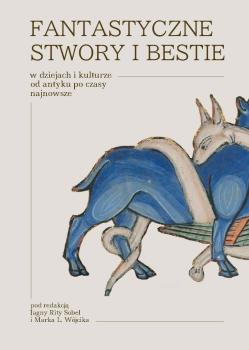Ciekawy przypadek jednorożca ze Schwerinu. Między tradycją a historią naturalną .......... 231
Synopsis
THE CURIOUS CASE OF THE SCHWERIN UNICORN. BETWEEN TRADITION AND NATURAL HISTORY
In 1572 Maerten de Vos created a series of ten animal depictions for Johann Albrecht I, the Duke of Mecklenburg. These paintings hung in the Schwerin Castle. One of them is an image of a unicorn. It’s a white animal closely resembling a horse. It has a narwhal’s tooth on its forehead, its feet are rhino-like, and it has a reptilian tail. This article intends to explain the origins of this quite atypical depiction. It compares it with unicorn descriptions known in the sixteenth century and analyses the animal’s symbolic meanings. The animal was generally considered a symbol of Christ or the Virgin Mary, but it also accompanied personifications of Chastity. De Vos’s unicorn, however, isn’t the animal from bestiaries, but a kartazonos. This is how ancient travellers described a rhinoceros. The rhino appeared in early modern Europe for the first time in 1515. It was a sensation, and the animal was often depicted. However, while de Vos painted real animals, he didn’t include a rhino but a legendary unicorn. It can be explained in two ways. On one hand, the depictions of rhinos generally copied Albrecht Dürer’s image, and there was no way to access different depictions. On the other, rhinos didn’t have any symbolic meaning. Schwerin images have multiple meanings, e.g., alluding to princely virtues. In this context, the unicorn, a symbol of Chastity, was a better fit.





